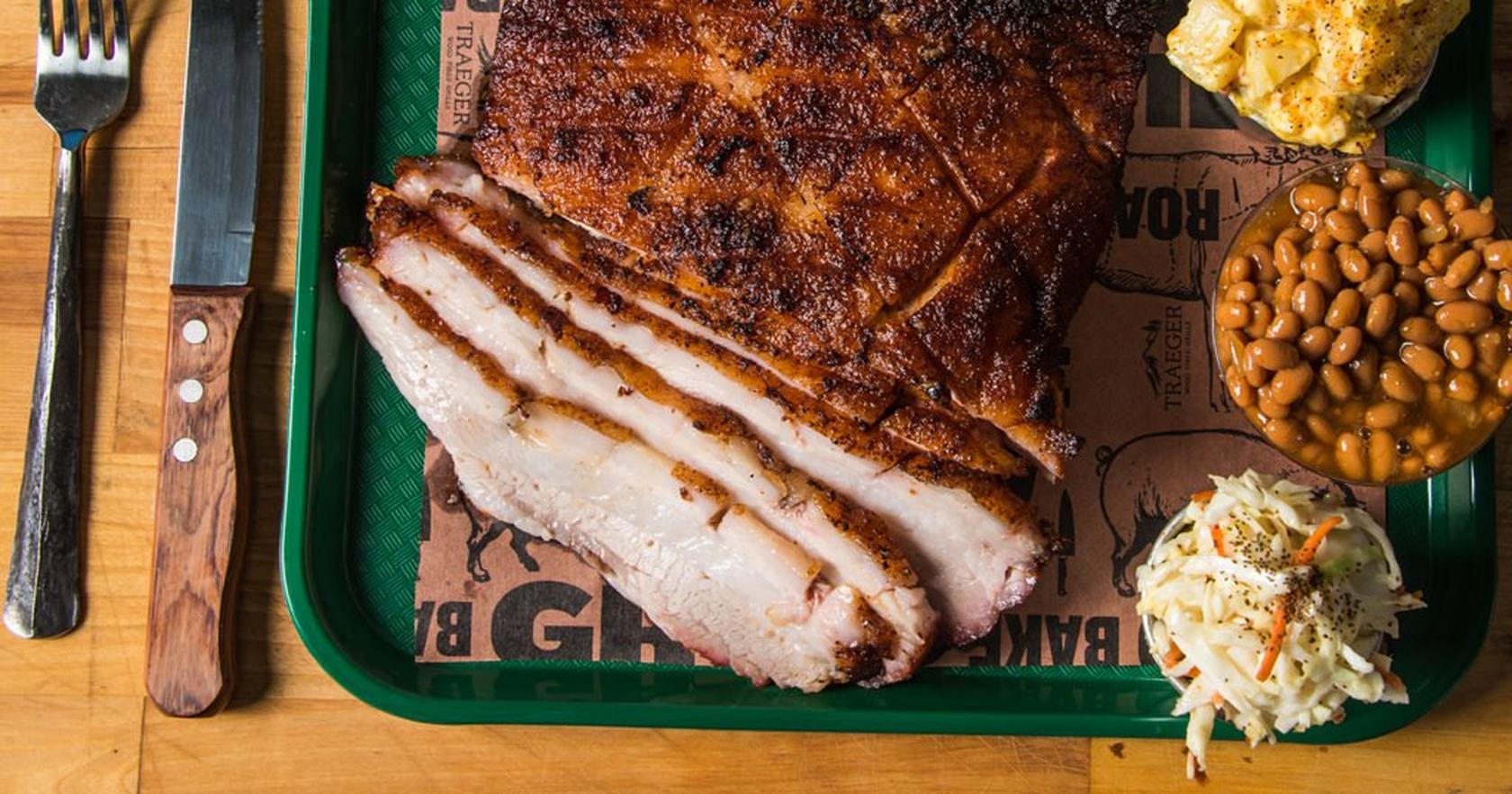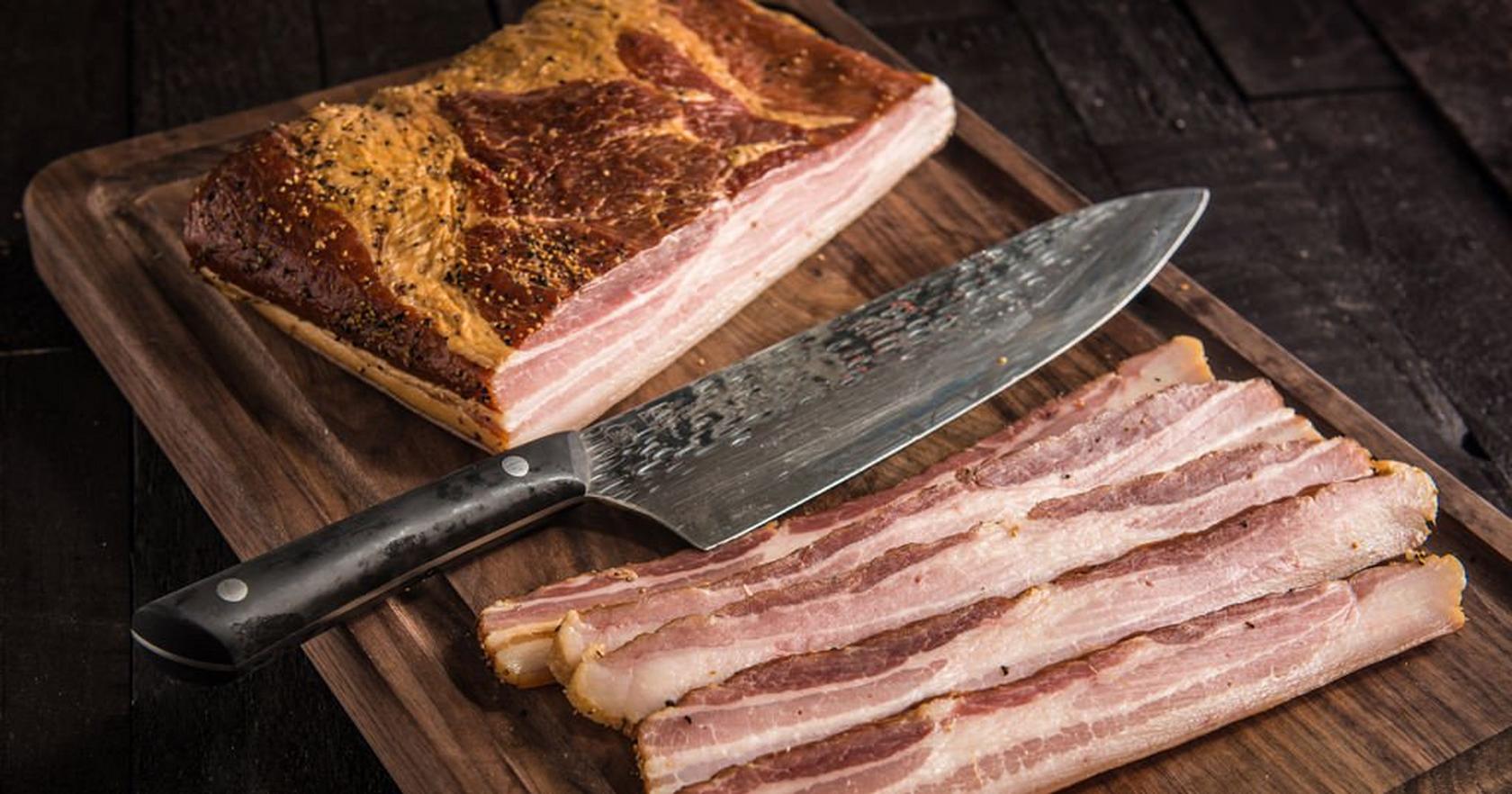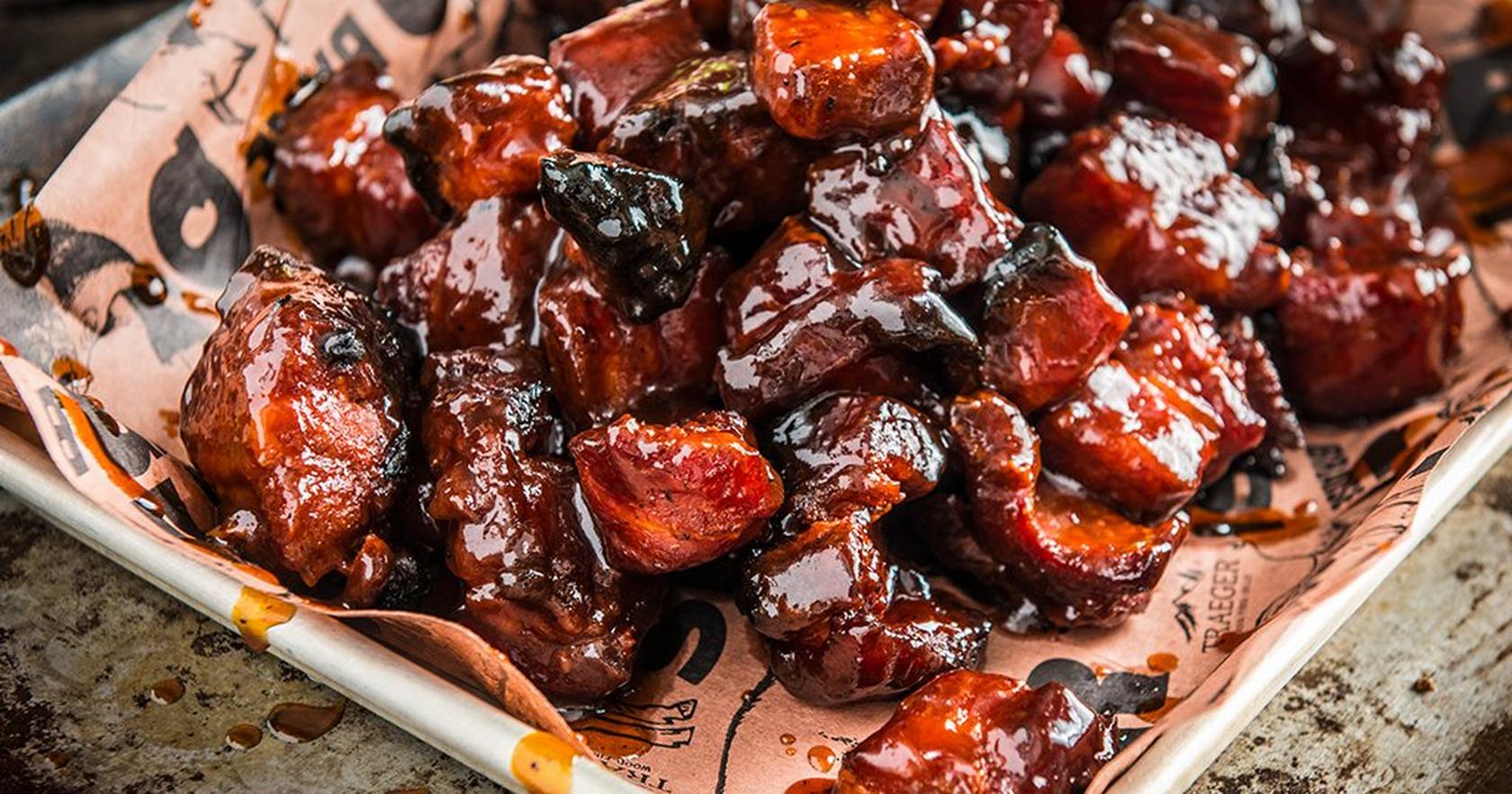
You might ask yourself, what is the difference between pork belly vs bacon? Asking questions like this is an important step in becoming a grill master and with this guide, you’ll become an expert.
To start with, bacon requires an introduction, as its versatility and ability to enhance the flavor of nearly any dish have endeared it to countless individuals. Its status as a favorite ingredient is well-deserved. Nonetheless, it's important to note bacon is not your only option when delving into the world of pork-based delicacies.
Meet pork belly, a lesser-known culinary gem that possesses its own distinct attributes, elevating flavors and richness in a wide array of dishes. In this guide, we will delve into the differences between bacon and pork belly, helping you make an informed decision for your next culinary adventure in the kitchen.
Difference Between Pork Belly vs Bacon
Pork belly is a cut of meat taken from the belly of a pig, known for its exceptionally tender and fatty nature. It features a rich marbling of fat within the meat, which contributes to its succulent and flavorful characteristics. Often used in various cuisines around the world, pork belly is a versatile ingredient that can be braised, roasted, grilled, or even used to make bacon. after undergoing a curing and smoking process.
Bacon is pork that has undergone a curing and smoking process. As mentioned, it can come from the belly of the pig, as well as back cuts.
Processing
Pork belly is always cut from the underside of the pig, and it makes up the entire slab of meat. It might be sold as an entire slab, but most people see it in their store in smaller blocks of meat that they can cut up on their own. You may even find it sliced or scored, with the skin or without.
Bacon also almost always comes from the belly of the pig, though can also be made from other cuts. Even the "thick cut" variety has been sliced into pieces for easier cooking and crisping. Unlike pork belly, bacon is salted and cured or smoked (or both) and can have all kinds of ingredients in it, from sugars to preservatives like nitrates. You can also find more natural bacon and even uncured bacon varieties in stores. Even these have been salted and smoked, although nitrate-free bacon uses celery as a natural source of preservatives.
Appearance
When you find pork belly in the store, it will usually have a large, thick layer of fat right on top instead of the various streaks throughout the meat, like bacon. Products should be marked as “pork belly” so you understand what you are buying. Since pork belly isn’t cured or smoked, it may have a more natural pork color and resemble a small, fatty pork roast.
Bacon is sliced thin, contains fat within the layers, and may be a different color due to the curing process it goes through. It’s rarely sold in a slab since the butcher or grocer will do that for you. You can find it thick-cut, with special seasonings (like pepper flakes), and possibly even pre-cooked.
Taste
Here’s where you can really see the main difference between pork belly and bacon. Because of the different ways they are prepared, they taste very different.
Pork belly isn't salty or smoky and doesn't have that cured bacon flavor. It’s rarely seasoned when you buy it and tastes like a very fatty piece of pork. There is a special kind of pork belly called “salt pork" that is very salty, so if you see it sold in stores, be aware that you won't be able to cook it in the same way as a typical pork belly. Any dish you make will have a very salty flavor.
Pork belly takes on the flavor of any sauces or rubs you use, so it’s ideal for smoking and braising.. Depending on the ingredients you use, it can be sweet, savory, or spicy.
Bacon tastes like, well, bacon. Salty and possibly sweet, it has a definite cured and smoky taste, like ham. You don't need to season bacon, but you can add it to things to boost the overall profile. Bacon goes well with sweet things, like candies and honey-glazed meats. You can also lean into its saltiness by pairing it with things that naturally lack salt, like eggs, breads, or pasta.
Fat Content
When it comes to fat, both meats deliver. Pork belly has a very thick layer of fat on the top of the portion, which keeps the meat moist while cooking and creates that decadent texture people seem to enjoy most.
The fat in bacon is distributed throughout the meat, the overall fat-to-muscle ratio can vary. Leaner cuts of bacon can be found, especially if it’s cut from a different part of the animal than the belly.
The fat content in bacon and pork belly can vary depending on the animal, but neither of them qualifies as a lean cut of meat. When cooking with these cuts, it's essential to be prepared for the substantial amount of grease they release. To prevent any potential hazards, it's advisable to use a drip tray or a suitable method to catch the drippings, as they can be flammable and challenging to clean up, not to mention detrimental to your plumbing.
Nutritional Benefits
Where do these two types of meat stand in terms of nutrition? Both can be part of a healthy diet, as long as you know what you're getting and can consume them in moderation.
When comparing the nutritional content of a 100-gram portion of pork belly and bacon, pork belly contains 53 grams of fat, whereas bacon has 37 grams of fat. In terms of cholesterol, pork belly has 72 mg, while bacon contains 66 mg. Pork belly provides 393 calories per serving, compared to the 518 calories in bacon, assuming both are prepared without any added sugars, spices, or sauces. To obtain accurate nutritional information for a prepared cut of pork belly or bacon, consider the impact of additional ingredients.
Both meats serve as sources of protein, with pork belly providing 9.3 grams and bacon containing 13.7 grams. If you're following a low-carb diet and seeking animal protein, bacon and pork belly can both be suitable choices. While pork belly remains fatty and high in cholesterol, it hasn't undergone the curing process, making it an appealing option for those looking to avoid nitrates, excessive salt, or processed foods in their recipes.
However, individuals aiming to steer clear of fatty meats may find a pork chop or pork loin to be better alternatives.
When To Use Pork Belly vs Bacon

Choosing between pork belly and bacon can have a significant impact on your dishes. Pork belly's rich marbling and tenderness make it perfect for braising and roasting, creating succulent dishes. On the other hand, bacon's smoky and savory profile adds a crisp and intense flavor to breakfasts, sandwiches, and various savory recipes. Understanding their unique attributes will help you to make informed culinary decisions and enhance your experience with both.
When To Use Pork Belly
Pork belly is a globally beloved ingredient and can be found in the Latin Chicharrón, Korean Samgyeopsal, Italian Porchetta, and is becoming increasingly popular in American cuisine.
You should consider using pork belly instead of bacon when you desire a richer and more tender texture in your dishes. Pork belly's higher fat content and marbling contribute to its succulence when braised, roasted, or slow-cooked, making it ideal for dishes where a melt-in-your-mouth experience is desired. Additionally, if you want to explore flavors beyond the smokiness of bacon, pork belly's natural taste can add a unique depth to your culinary creations. So, opt for pork belly when you're looking for a succulent touch to elevate your recipes.
When To Use Bacon
You should consider using bacon instead of pork belly when you want to infuse a dish with its distinctive smoky and savory flavor. Bacon's thin, crispy slices make it perfect for adding a delicious crunch to breakfasts, sandwiches, salads, and various savory recipes. Additionally, if you prefer a leaner option with a slightly lower fat content, bacon might be the better choice for certain dishes. So, opt for bacon when you crave its unique taste and texture to enhance your culinary creations.
Preparing and Cooking Pork Belly
Pork belly is a versatile and delectable cut of meat that can be prepared in countless delicious ways. One popular method is braising, where the pork belly is slow-cooked in a flavorful liquid such as broth, wine, or soy sauce until it becomes tender and succulent. Roasting is another popular choice, involving seasoning the pork belly with herbs, spices, and marinades before roasting it in the oven to achieve a crispy crackling on the outside and tender meat inside.
Grilling thinly sliced pork belly over direct heat is also common, often marinated or seasoned with spices to add a delicious smoky flavor. Additionally, pork belly can be fried until crispy, either as small cubes or strips, and used in dishes like pork belly bites or stir-fries. Sous vide is another modern technique, involving cooking the pork belly in a vacuum-sealed bag at a precise low temperature for an extended period, resulting in a tender and evenly cooked texture.
Smoking is also a popular option, where the pork belly is cured with salt and other spices and then smoked slowly over wood chips to impart a rich smoky flavor. Stir-frying pork belly with vegetables and sauces creates savory and flavorful Asian-inspired dishes. Pork belly can even be added to hearty stews and casseroles for added richness and depth of flavor.
Each preparation method brings out unique flavors and textures, allowing you to explore different culinary experiences with this delightful ingredient.
Pork Belly Recipes
Grab your favorite recipe and add some pork belly for flavor, or choose one of ours to share with loved ones and friends.

The Pork Belly Bourbon Baked Beans features smoky chunks of pork and a little apple cider vinegar for some kick. This sweet and sassy recipe tastes much better than anything you can get out of a can.
This applewood smoked BBQ Pork Belly can be paired with almost everything. Serve it alongside some slaw and chips, or slice it up for a smoky sandwich filling.
Taco Tuesdays won’t be the same after serving these BBQ Pork Belly Tacos. The pickled slaw and smoky filling will leave guests asking to come for dinner next week, too.

Just when you thought a creamy homemade mac and cheese couldn’t get better, we’ve gone and added savory pork belly. This Baked Pork Belly Mac and Cheese takes a bit longer than the stuff from the box, as you’ll need to cover it and rub it and let it sit overnight. The results are more than worth it.
Pork Belly FAQ
If you're still curious about the differences between pork belly vs bacon, read these important FAQ's.
Is pork belly healthier than bacon?
Bacon contains smoke flavor, preservatives (like nitrates), and added ingredients that may not be considered part of a healthy diet. If you’re trying to eat more naturally, pork belly may make a better choice. Just remember that pork belly still contains high fat and cholesterol compared to other pork cuts, such as pork loin or lean-cut chops.
Which is more expensive, pork belly or bacon?
Per pound, bacon tends to be priced higher than pork belly. It requires more processing and a longer time from farm to table since it must be smoked and cured before its trip to the grocery store. Natural or nitrate-free bacon can cost even more, so pork belly may make a more affordable alternative for those looking for a belly cut of pork.
Is bacon easier to cook than pork belly?
Yes, bacon is generally easier and quicker to cook compared to pork belly. Bacon is typically sold in pre-sliced, thin strips that cook quickly due to their thinness. It can be pan-fried, oven-baked, or even microwaved in a matter of minutes until it reaches the desired crispiness.
On the other hand, pork belly is thicker and requires more time and attention during the cooking process. Depending on the preparation method, such as roasting or braising, pork belly may need to cook for a more extended period at lower temperatures to achieve the desired tenderness and texture.
BBQ Pork Belly
by Traeger Kitchen
1 Reviews
Prep Time
15 Min
Cook Time
3 Hr
Serves
6
Pellets
Apple
Looking for a savory meat that pairs well with just about anything? This BBQ pork belly is seasoned with Traeger Pork & Poultry rub, salt, pepper, and roasted over applewood pellets for a smokin' delicious protein.
Ingredients
main
| 1 | (3 lb) pork belly, skin removed |
| 4 Tablespoon | kosher salt |
| 1/2 Teaspoon | black pepper |
| To Taste | Traeger Pork & Poultry Rub |
1
When ready to cook, set the Traeger temperature to 275℉ and preheat with the lid closed for 15 minutes.
2
Season the pork belly on both sides with the salt, pepper, and Traeger Pork & Poultry Rub.
3
Place the pork belly directly on the grill grates, meat-side down. Insert the probe horizontally into the meat, avoiding the fat cap. Close the lid and cook until the internal temperature reaches 200°F, 3-3 1/2 hours.
4
Remove the pork belly from the grill and let rest for 10-15 minutes before slicing and serving as desired, such as in tacos or sandwiches or on mac and cheese or nachos. Enjoy!